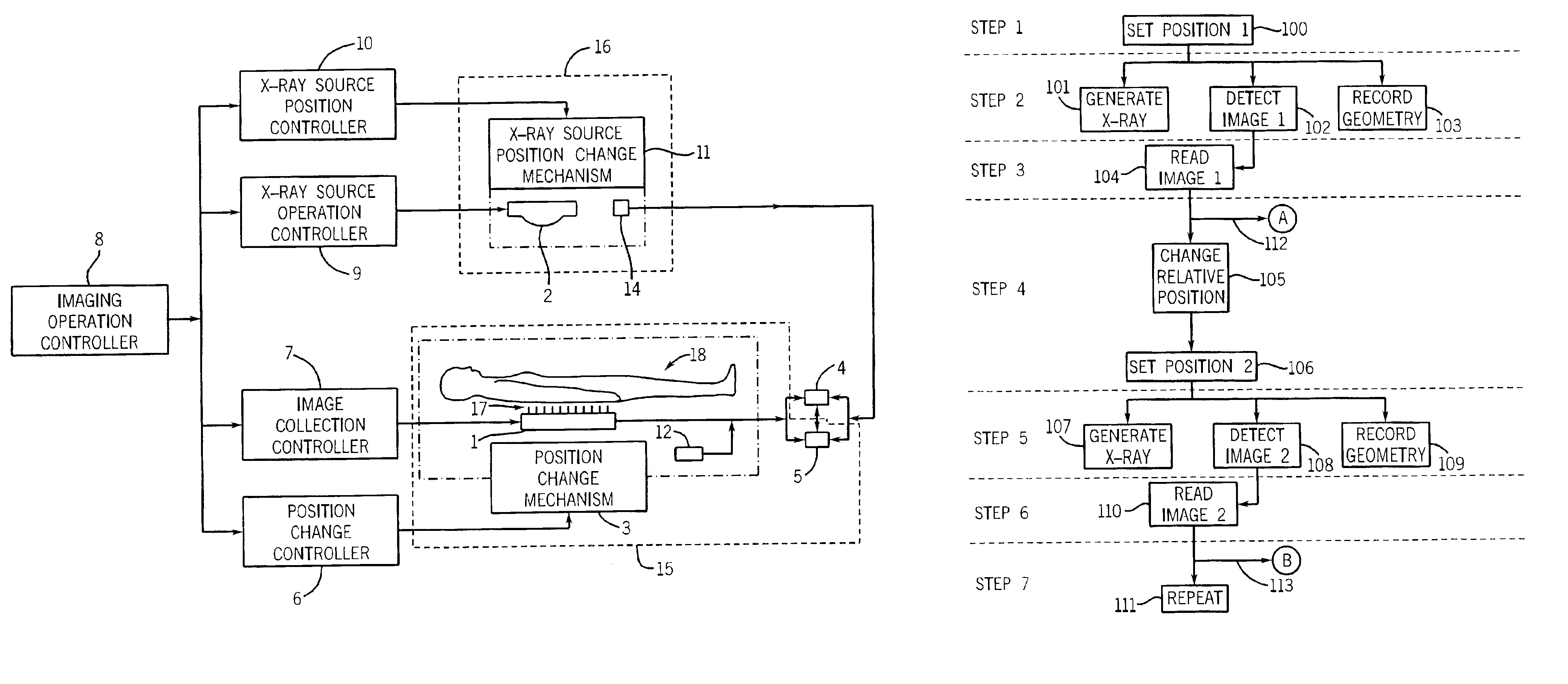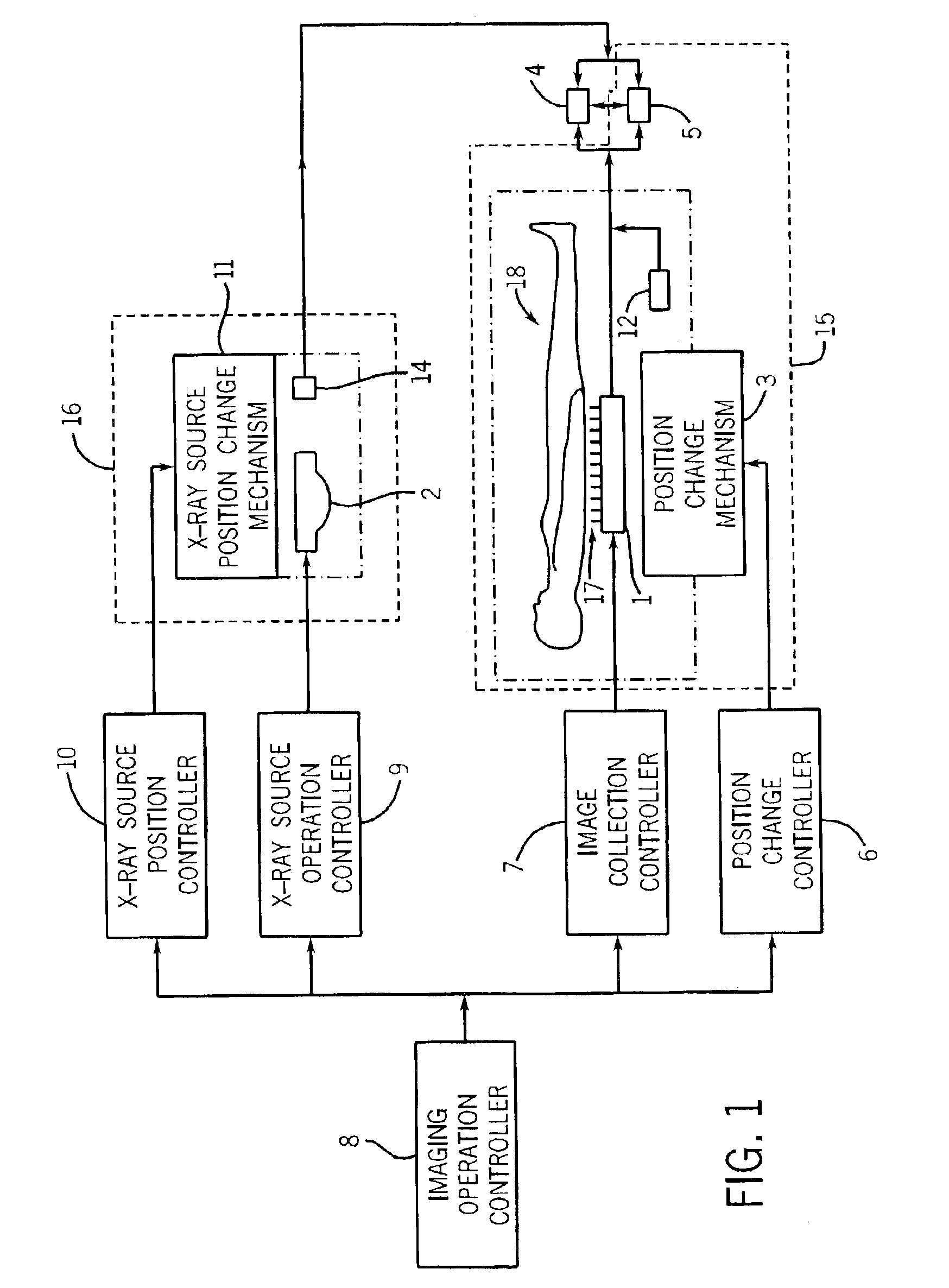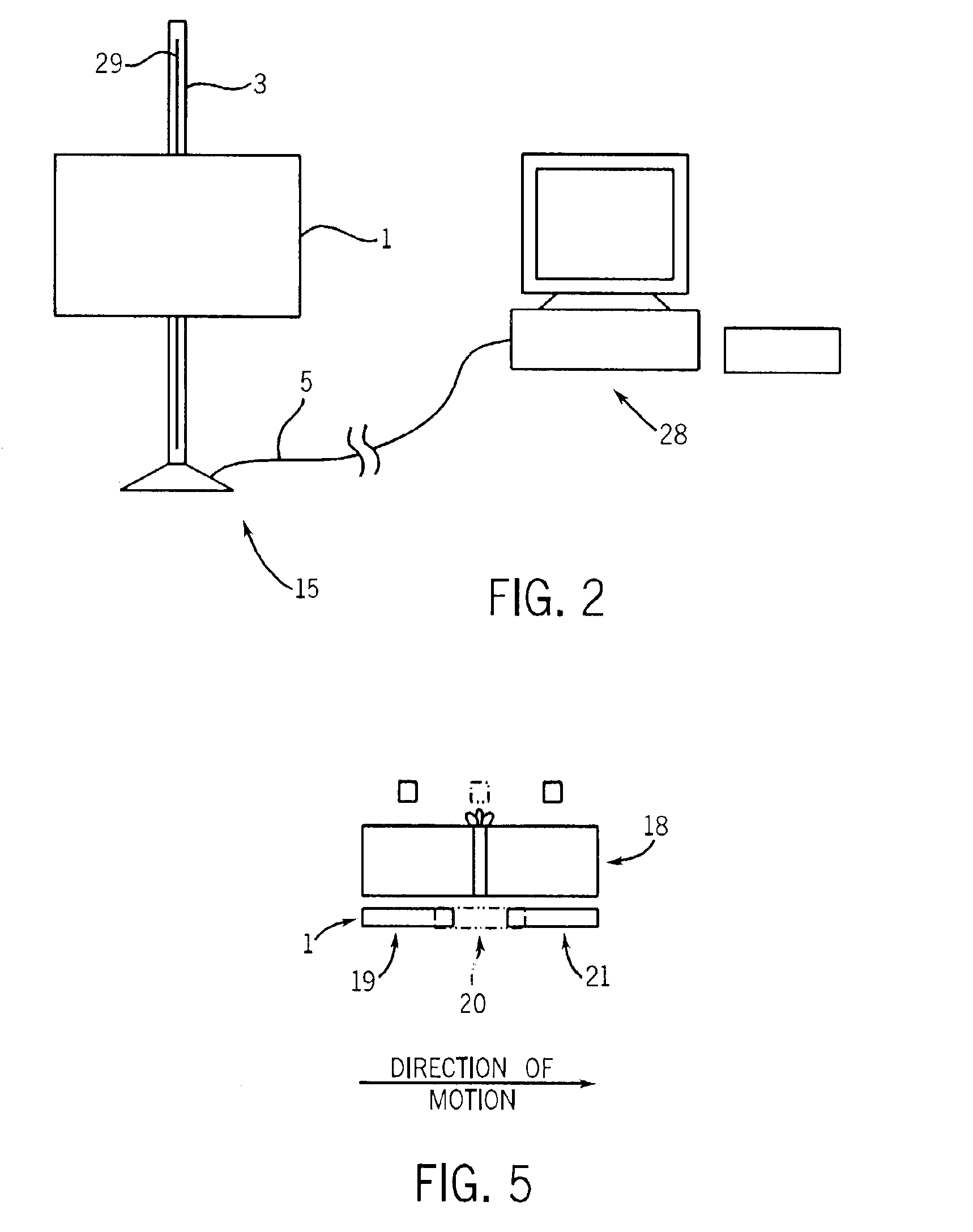Image pasting using geometry measurement and a flat-panel detector
a detector and geometry technology, applied in the field of xray images, can solve the problems of difficult handling, low image quality (iq) of many fs systems, and less accurate pasting imag
- Summary
- Abstract
- Description
- Claims
- Application Information
AI Technical Summary
Benefits of technology
Problems solved by technology
Method used
Image
Examples
Embodiment Construction
[0030]FIG. 1 is a schematic diagram showing the structure of an x-ray device according to one embodiment of the present invention. The x-ray device includes components such as an x-ray detector 1, an x-ray grid 17, an x-ray source 2, a position change mechanism 3, a processor 4, an image storage enabling unit 5, a position change controller 6, an image collection controller 7, an x-ray source controller 9, an x-ray source position controller 10, an x-ray source position change mechanism 11, an imaging operation controller 8, a positioner 12, and an inclinometer 14.
[0031]The x-ray device images a subject of interest 18. The subject of interest 18 can be any number of items where taking an x-ray image of the item is desired. Some typical subjects of interest are human patients to make diagnosis, sealed packages to determine contents, and welding joints to ensure a complete weld.
[0032]In FIG. 1, the subject of interest 18 is a human patient. The patient can stand in any position, e.g.,...
PUM
 Login to View More
Login to View More Abstract
Description
Claims
Application Information
 Login to View More
Login to View More - R&D
- Intellectual Property
- Life Sciences
- Materials
- Tech Scout
- Unparalleled Data Quality
- Higher Quality Content
- 60% Fewer Hallucinations
Browse by: Latest US Patents, China's latest patents, Technical Efficacy Thesaurus, Application Domain, Technology Topic, Popular Technical Reports.
© 2025 PatSnap. All rights reserved.Legal|Privacy policy|Modern Slavery Act Transparency Statement|Sitemap|About US| Contact US: help@patsnap.com



